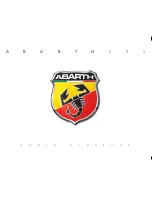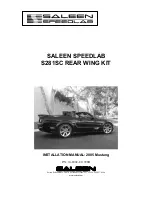
ABS is activated during braking under certain road or
stopping conditions. ABS-inducing conditions can in-
clude ice, snow, gravel, bumps, railroad tracks, loose
debris, or panic stops.
You also may experience the following when the brake
system goes into anti-lock:
•
The ABS motor running (it may continue to run for a
short time after the stop),
•
The clicking sound of solenoid valves,
•
Brake pedal pulsations, and
•
A slight drop or fall away of the brake pedal at the end
of the stop.
These are all normal characteristics of ABS.
WARNING!
•
The Anti-Lock Brake System (ABS) contains so-
phisticated electronic equipment that may be sus-
ceptible to interference caused by improperly in-
stalled
or
high
output
radio
transmitting
equipment. This interference can cause possible
loss of anti-lock braking capability. Installation of
such equipment should be performed by qualified
professionals.
•
Pumping of the anti-lock brakes will diminish
their effectiveness and may lead to a collision.
Pumping makes the stopping distance longer. Just
press firmly on your brake pedal when you need
to slow down or stop.
(Continued)
282
STARTING AND OPERATING
Summary of Contents for 2011 Challenger
Page 4: ......
Page 7: ...INTRODUCTION 5 ...
Page 10: ......
Page 120: ...118 UNDERSTANDING THE FEATURES OF YOUR VEHICLE ...
Page 121: ...3 UNDERSTANDING THE FEATURES OF YOUR VEHICLE 119 ...
Page 122: ...120 UNDERSTANDING THE FEATURES OF YOUR VEHICLE ...
Page 172: ......
Page 177: ...INSTRUMENT CLUSTER 4 UNDERSTANDING YOUR INSTRUMENT PANEL 175 ...
Page 243: ...UNDERSTANDING YOUR INSTRUMENT PANEL 241 ...
Page 301: ...STARTING AND OPERATING 299 ...
Page 382: ......
Page 438: ......
Page 456: ......
Page 467: ...INDEX 10 ...
















































